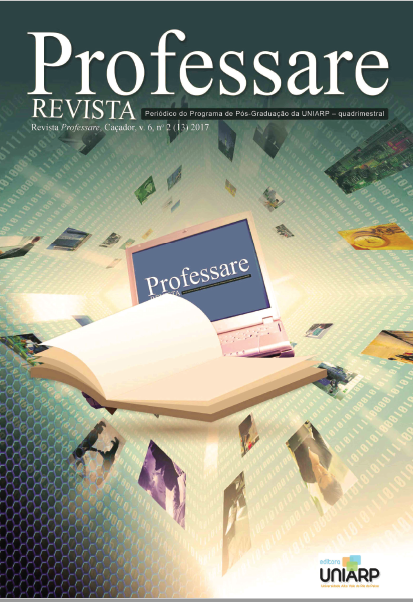AS NOVAS IDENTIDADES DAS PRINCESAS EMPODERADAS NA LITERATURA INFANTOJUVENIL CONTEMPORÂNEA
DOI:
https://doi.org/10.33362/professare.v6i2.1213Resumo
Este artigo apresenta uma análise sobre a representação feminina nos contos de literatura infantojuvenil contemporâneos e tem como objetivo principal identificar como são construídas as personagens femininas, traçando um paralelo comparativo com os contos tradicionais, no intuito de compreender os discursos pertencentes a cada momento histórico, bem como a identidade construída em cada um desses períodos. Especificamente, buscamos analisar a construção do estereótipo feminino e relacionar a ocorrência de discursos a partir de uma contingência histórica específica, por meio da retomada de discursos já-ditos. Os principais referenciais que fundamentaram a pesquisa foram os estudos sobre Literatura Infantil: Carvalho (1987) e Zilberman (2014); Análise do Discurso: Foucault (2008) e Gregolin (2001); Concepções de Estereótipo e Gênero: Bhabha (2013), Vargas (2009) e Perrot (2007); Identidade: Hall (2006) e Bauman (2005). Com base na análise dos dados, foi possível concluir que as identidades não são mais as mesmas. No que compete à identidade feminina, temos uma nova concepção de ser mulher. Os contos de literatura infantojuvenil contemporâneos têm representado, através de suas personagens, mulheres que rompem com estereótipos de beleza, de passividade e de extrema dependência masculina. As “novas princesas” empoderadas assumem novas identidades e estão livres para construírem suas próprias histórias.
Palavras-chave: Literatura Infantojuvenil. Identidade. Estereótipo de Gênero.
ABSTRACTThis article presents an analysis of female representation in contemporary children and youth literature of tales and aims to identify how female characters are constructed by drawing a comparative parallel with traditional tales to understand the discourses pertaining to each historical moment as well the identity built in each of these periods. Specifically, we seek to analyze the construction of the female stereotype and to relate the occurrence of discourses based on a specific historical contingency, through the resumption of already spoken discourses. The main references that supported the research were the studies on Children's Literature: Carvalho (1987) and Zilberman (2014); Discourse Analysis: Foucault (2008) and Gregolin (2001); Concepts of Stereotype and Gender: Bhabha (2013), Vargas (2009) and Perrot (2007); Identity: Hall (2006) and Bauman (2005). Based on the analysis of the data, it was possible to conclude that the identities are no longer the same. As far as female identity is concerned, we have a new conception of being a woman. The contemporary children's literature stories have represented, through their characters, women who break with stereotypes of beauty, passivity and extreme dependence on men. Empowered "new princesses" take on new identities and are free to build their own stories.
Keywords: Children's Literature. Identity. Gender Stereotype.
Downloads
Publicado
Como Citar
Edição
Seção
Licença
Autores que publicam nesta revista concordam com os seguintes termos:- Autores mantém os direitos autorais e concedem à Revista o direito de primeira publicação, com o trabalho simultaneamente licenciado sob a Licença Creative Commons Attribution que permite o compartilhamento do trabalho com reconhecimento da autoria e publicação inicial nesta Revista.
- Autores têm autorização para assumir contratos adicionais separadamente, para distribuição não-exclusiva da versão do trabalho publicada nesta Revista (ex.: publicar em repositório institucional ou como capítulo de livro), com reconhecimento de autoria e publicação inicial nesta Revista.
- Autores têm permissão e são estimulados a publicar e distribuir seu trabalho online (ex.: em repositórios institucionais ou na sua página pessoal) a qualquer ponto antes ou durante o processo editorial, já que isso pode gerar alterações produtivas, bem como aumentar o impacto e a citação do trabalho publicado (Veja O Efeito do Acesso Livre).









